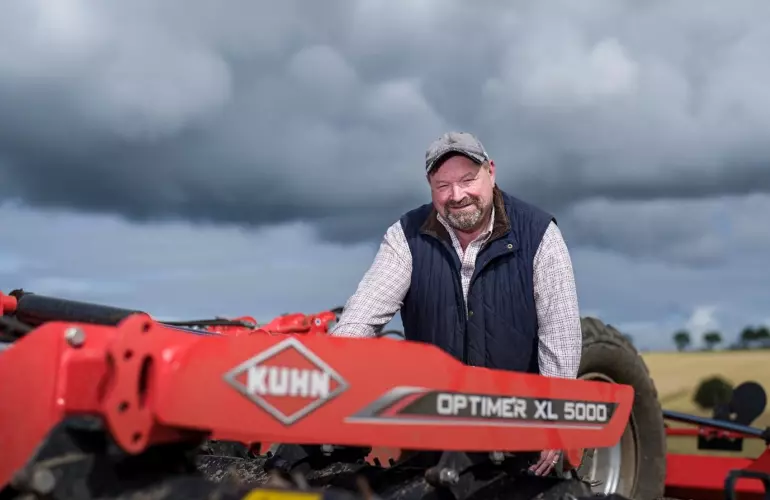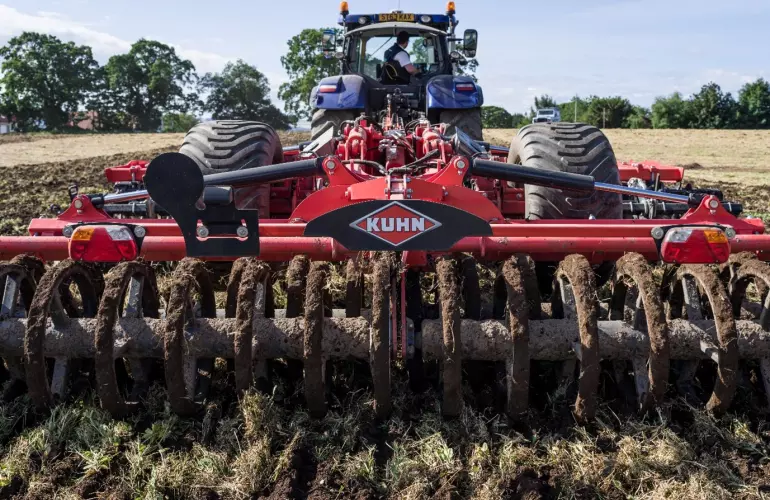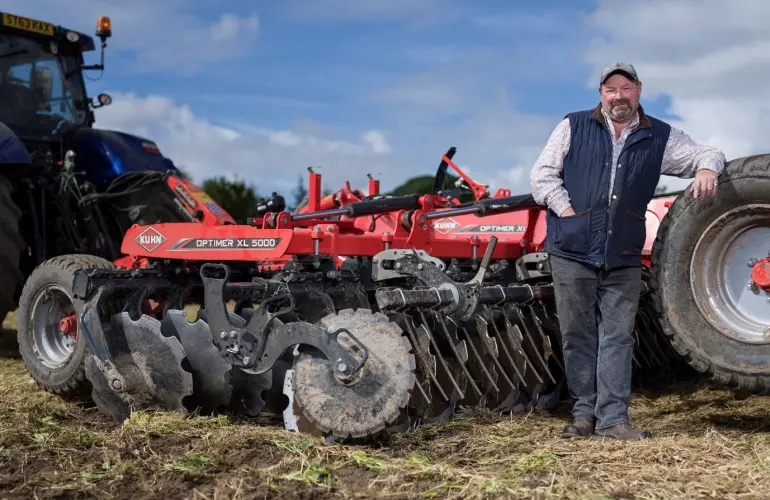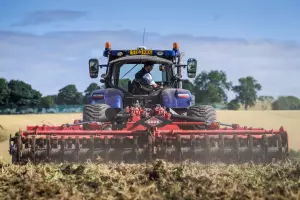Gordon Stewart manages the cereal crops at Inverarity Farms Ltd near Dundee. 1000 acres is divided into 600 acres of winter wheat and winter oats, 200 of spring oats and 200 acres which is rented out for peas as part of the rotation. Working with the landowner, Mr Stewart has championed a min till approach, moving away from ploughing in favour of a KUHN Optimer XL 5000 supplied by dealer Agricar Ltd.
“Our soils are varied, and we can be drilling in light, sandy types or heavy clay so creating the right tilth is tricky. However, the discs and roller work well to break up most soils and after two passes leave a good even tilth and seedbed for the drill to follow,” he explains.
The principal benefit is fuel and time savings. Mr Stewart suggests some two days of cover crop ploughing can be achieved in half a day with the Optimer.

“If I were to plough a pea field and power harrow it ready to plant our spring oats, I could use more than twice the fuel, put greater strain on the tractors and use more time. With the Optimer we can improve soil health whilst saving time, which will help the farm to be more sustainable.”
The XL model features larger discs compared to the Optimer L. With working depths as low as 15 centimetres, the discs are capable of achieving a fine and even tilth even when operating at speeds of around 15 km/h. Having two rows of discs in close succession also makes the Optimer XL a good machine to bury trash.

“We always felt like our old machine’s discs didn’t go deep enough, especially on pea ground. We would often opt for the plough in order to go that bit deeper and reach 8 or 9 inches down, but Agricar suggested moving to the Optimer which achieves a similar depth. We now use two passes to prepare the seedbed, bury the trash and leave a fine tilth.”
By reducing his tyre pressures on a New Holland T7 225 to 18 psi he has also been able to optimise grip and improve fuel consumption. The lower tyre pressure is also helping reduce soil compaction and this has been observed by the farm’s agronomist who has suggested last year’s overwintering crops are looking promising.

“In January 2023 the winter wheat crop is looking excellent and our agronomist has been keen to point out the benefits of the min till system. It would seem we are in a win:win situation where we can spend less time and less on fuel to achieve a comparable result that is also better for the soil structure and more sustainable.”
The 5-metre model is ample for the farm’s requirements and is designed to be operated with the mid horsepower tractors such as the New Holland and a John Deere R6195 deployed by the farm. The lighter tractors reduce compaction in the field and are also more economical on fuel. This has enabled Mr Stewart to go over the ploughed fields before spring drilling.
“The Optimer moves well over most ground and the discs prepare the land well for almost any crop. I’ve already started putting the discs through the land we ploughed in 2022 because it will create a better bed for the spring oats to take. I am confident it will help with both establishment and yield.”
Preparing the soil in this way also makes drilling much easier and facilitates an accurate and reliable seed placement. Mr Stewart suggests that he can operate at higher speeds with his drill when following the Optimer and the ground being planted is more uniform with less trash on the surface.
In February he will be using the Optimer to disc cover crops ahead of spring seeding and is confident that the machine will make light work of the job.


“Working stubble and cover crops in is what this machine was designed for. As we work towards a more sustainable min till system, having a disc cultivator that can operate at a variety of depths in varying soil types is vital. The Optimer XL has already proved a suitable alternative to a plough and power harrow system. It will never replace the need for these machines, but it enables us to save time, fuel and improve soil health so I will be advocating it at every opportunity,” he concludes.
